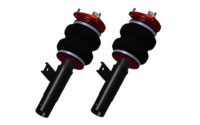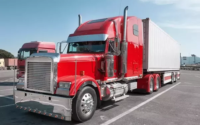Electric Bus Market to Register a Growth of 11.20% CAGR by Volume through 2026
Rapid adoption of EVs by transit agencies due to lower ownership costs are expected to drive the global electric bus market through the forecast period.
According to TechSci Research report, “Global Electric Bus Market By Battery Type (Lithium Ion & Lead Acid), By Application (Intracity, Intercity & Airport Bus), By Bus Length (6-8m, 9-12m, & Above 12m), By Seating Capacity (Up to 30-Seater, 31-40 Seater, & Above 40), By Region, Competition, Forecast & Opportunities, 2026”, Global electric bus market is estimated to reach 121.12 thousand units by 2026. According to a fact sheet published by the Environmental and Energy Study Institute, it is about 2.5 times cheaper to power vehicles with electricity rather than diesel, and electricity prices are generally much more stable than gasoline or diesel prices. The U.S. National Renewable Energy Laboratory has found that the fuel economy of BEBs (Battery Electric Buses) is five times higher than that of diesel buses operated on equivalent routes. In addition, maintenance costs for electric motors are much lower because they have far fewer moving parts than conventional motors and are far more efficient. In addition to that, a diesel bus has a life cycle global warming emission of 2,680 g/mile CO2e, whereas a battery electric bus emits 1,078 g/mile CO2e, which is around 60% lower and moreover is 12% lower than a natural gas-powered vehicle. Therefore, governments and private transport agencies are actively involved in rapidly adopting and replacing their old diesel or petrol/gasoline powered vehicles with electrically powered buses. Moreover, with expansion of EV charging infrastructure and lowered costs of EV battery and other components, various airports and intercity transportation facilities have started deploying electric buses across the globe. Numerous well-known companies and start-up companies are investing in electric vehicle technologies and manufacturers are involving in launching of technologically advanced vehicle models. All these factors are anticipated to accelerate the growth of global electric bus market in the next five years.
Browse more than 116 market data figures and 16 tables spread through 110 Pages and an in-depth TOC on “Global Electric Bus Market”
https://www.techsciresearch.com/report/electric-bus-market/4176.html
Global electric bus market can be segmented on the basis of seating capacity, by battery type, by application, by bus length, by region and by company. Based on seating capacity, the market is segmented among buses with seating capacity of 30 seats and below, 31-40 seats and above 40 seats. On the basis of bus length, the market is classified among buses of length 6-8 m, 9-12 m, and above 12 meters. Globally, due to the built type and applicability, buses of medium size with seating capacity between 31 to 40 seats and length of 9 to 12 meters are widely preferred for transportation on intercity and intracity routes. This trend is gaining more popularity and is expected to step up the demand for electric buses in the future years also. On the basis of battery type, the market is segmented among buses with lithium ion batteries and lead acid batteries. Lead-acid is the oldest rechargeable battery in existence, these batteries contain electrolyte which is 36% sulfuric acid and 64% water. This is a major safety concern, moreover lithium ion batteries have a better performance, are lightweight and charges faster than a lead acid battery assembly. Therefore, lithium ion batteries are widely popular amongst electric bus manufacturers and users & a similar trend is expected to follow in the next five years. In terms of application, the market is divided among three sub segments namely, intercity, intracity and airport bus. Bus owners are facing drawback of electric buses as they cover shorter ranges than a diesel bus can cover. This is a reason that majority of the market is dominated by buses used for transportation within a city or intracity transportation. However, with launching of technologically advanced electric buses with better range, intercity transportation buses are also gaining market popularity. Market is segmented across geographical regions of North America, Europe, Asia-Pacific and Middle East & Africa. Since, Asia-Pacific is the region with developing economies, public transport facilities are still under development. In such countries it is easier to adopt EVs in the municipal & private fleets and with flooding investments in such sectors, countries like China, India & Japan are witnessing a rapid growth in sales of electric buses.
In the year 2020, to prevent spread of COVID-19, the governments implemented lockdown which impacted supply chain, international trade, production as well as sales. According to TechSci Research’s estimates, the market suffered a decline of 18.32% in terms of volume. Globally, aggregate investment contracted massively at the time of lockdown, overall production declined, and imports of goods and services witnessed a robust descent impacting the economy as well as people purchasing power negatively in 2020. This decline left a remarkable depreciation in the electric bus market across most countries; however, it is currently reviving and is set to overcome the descent in the 2021-2022 period owing to the governments’ stimulus for economy revival and unlocking international trades and investments. On the other hand, due to succumbed growth in ICE vehicles, in various countries like India, Japan, Singapore, United States, Germany, United Kingdom, etc. electric bus market witnessed a massive growth in the year 2020.
Zhengzhou Yutong Bus Co., Ltd., BYD Auto Co., Ltd., VDL Groep, Solaris Bus & Coach sp. z o.o., etc. are some of the leading players operating in the global electric bus market. Apart from these flagship companies, many startup companies are also increasing their footprint in the global electric bus market by pushing their low-cost products blended with ease of availability. Major electric bus manufacturing companies are signing up contracts and partnerships with government and private transit or transport corporations across the globe for better market penetrations.
Download Sample Report @ https://www.techsciresearch.com/sample-report.aspx?cid=4176
Customers can also request for 10% free customization on this report.
“Owing to development of EV charging infrastructure and due to lower ownership cost, there is a rapid replacement of diesel buses by electric buses fleet by transport agencies. Also, increasing global EV brands penetration and expansion of manufacturing capabilities are further expected to back the growth of the global electric bus market in future years.”, said Mr. Karan Chechi, Research Director with TechSci Research, a research based global management consulting firm.
“Global Electric Bus Market By Battery Type (Lithium Ion & Lead Acid), By Application (Intracity, Intercity & Airport Bus), By Bus Length (6-8m, 9-12m, & Above 12m), By Seating Capacity (Up to 30-Seater, 31-40 Seater, & Above 40), By Region, Competition, Forecast & Opportunities, 2026” has evaluated the future growth potential of the global electric bus market and provides statistics and information on market size, structure and future market growth. The report intends to provide cutting-edge market intelligence and help decision makers take sound investment decisions. Besides, the report also identifies and analyzes the emerging trends along with essential drivers, challenges, and opportunities in the global electric bus market.
Contact
Mr. Ken Mathews
708 Third Avenue,
Manhattan, NY,
New York – 10017
Tel: +1-646-360-1656
Email: [email protected]



